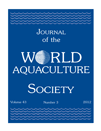
JOURNAL OF THE WORLD AQUACULTURE SOCIETY
Scope & Guideline
Fostering Collaboration for a Thriving Aquaculture Community
Introduction
Aims and Scopes
- Aquatic Animal Health and Nutrition:
Research focusing on the health, nutrition, and feeding practices of aquatic species, including the use of functional feeds, probiotics, and alternative protein sources. - Aquaculture Systems and Technologies:
Studies on various aquaculture systems including recirculating aquaculture systems (RAS), biofloc technology, and the integration of aquaculture with other agricultural practices (e.g., aquaponics). - Environmental Impact and Sustainability:
Investigations into the environmental effects of aquaculture practices, including water quality management, waste management, and the sustainability of feed resources. - Genetics and Breeding:
Research on the genetic improvement of aquaculture species, including selective breeding, genetic mapping, and the use of biotechnological tools to enhance growth and disease resistance. - Socio-Economic Aspects of Aquaculture:
Analysis of the socio-economic implications of aquaculture development, including market access, economic impact assessments, and the role of aquaculture in food security. - Disease Management and Biosecurity:
Studies addressing the prevention, diagnosis, and treatment of diseases affecting aquaculture species, including the development of vaccines and biosecurity measures.
Trending and Emerging
- Sustainable Feed Alternatives:
There is a growing focus on developing sustainable feed alternatives, such as insect meal, plant-based proteins, and by-products from other industries, to reduce reliance on traditional fish meal and enhance the sustainability of aquaculture. - Impact of Climate Change:
Research exploring the effects of climate change on aquaculture practices, species adaptability, and ecosystem interactions is increasingly prominent, reflecting the urgent need for adaptive strategies. - Microbiome Research in Aquaculture:
Emerging studies on the role of microbiomes in fish health, growth performance, and disease resistance are gaining traction, emphasizing the importance of gut health and microbial ecology. - Integration of Technology in Aquaculture:
The incorporation of advanced technologies, including automated systems, sensor technologies, and data analytics, is on the rise, aimed at improving efficiency and monitoring in aquaculture operations. - Aquaculture and Food Security:
Research addressing the role of aquaculture in global food security, particularly in light of increasing population pressures and the need for sustainable food sources, is becoming increasingly significant.
Declining or Waning
- Traditional Aquaculture Practices:
Research focused on conventional aquaculture methods is becoming less prominent as innovative technologies and sustainable practices gain traction. - Wild Capture Fisheries Interactions:
Studies that explore interactions between aquaculture and wild fisheries are appearing less frequently, possibly due to a growing focus on aquaculture's self-sufficiency. - Aquaculture of Less Common Species:
Research on the farming of less commercially viable or niche species is declining as the industry shifts towards more economically viable and high-demand species.
Similar Journals
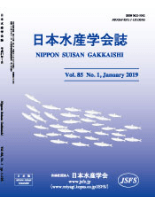
NIPPON SUISAN GAKKAISHI
Cultivating a Legacy of Aquatic Research ExcellenceNIPPON SUISAN GAKKAISHI, published by the Japanese Society of Fisheries Science, is a prestigious journal with a long history dating back to its inaugural issue in 1932. This journal, which spans key contributions to the field of Aquatic Science, serves as a vital platform for the dissemination of important research findings related to fisheries and aquatic biology, fostering knowledge and innovation in Japan and beyond. Although it is not an open-access publication, its rigorous peer-review process ensures the quality and integrity of the articles published. The journal is currently listed in the Q4 category for Aquatic Science according to the 2023 metrics, placing it within a niche but significant corner of the research landscape. With an ISSN of 0021-5392 and E-ISSN of 1349-998X, it continues to provide essential insights that benefit researchers, professionals, and students alike, highlighting advancements and challenges within aquatic ecosystems over a converged year span that continues to evolve through to 2024.

BOLETIM DO INSTITUTO DE PESCA
Illuminating emerging studies in aquatic sciences.BOLETIM DO INSTITUTO DE PESCA, published by the Instituto Pesca, is a Brazilian journal dedicated to advancing the fields of Animal Science and Aquatic Science. With its Open Access policy adopted in 2008, the journal ensures that research is widely disseminated, fostering collaboration and innovation among researchers, professionals, and students alike. Despite its recent Q4 category rankings in the 2023 metrics for both disciplines, the journal plays a vital role in providing a platform for emerging studies and critical discussions related to aquatic ecosystems and fisheries management. Covering a wide range of topics within its scope, BOLETIM DO INSTITUTO DE PESCA publishes original research, reviews, and case studies, stimulating academic dialogue and contributing to the sustainable management of aquatic resources in Brazil and beyond. This journal is an essential resource for anyone invested in marine and freshwater biology, ecology, and conservation.
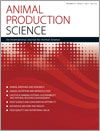
Animal Production Science
Advancing Sustainable Animal Production KnowledgeAnimal Production Science, published by CSIRO PUBLISHING, is a prestigious journal that caters to the fields of Animal Science and Food Science. With an ISSN of 1836-0939 and an E-ISSN of 1836-5787, the journal features high-quality research and reviews that are crucial for advancing the understanding and innovation of animal production systems. Recognized within the Q2 category of both Animal Science and Zoology, and Food Science, as per the 2023 Journal Rankings, Animal Production Science has achieved commendable Scopus rankings, placing it in the 68th and 48th percentiles in its respective categories. With converged years from 2009 to 2024, and an aim to disseminate knowledge that promotes sustainable practices, the journal is pivotal for researchers, professionals, and students devoted to animal production and food security. Exploring topics from livestock management to food quality, the journal offers valuable insights for enhancing productivity while considering welfare and environmental impact. For those seeking accessibility, the journal provides various open access options, encouraging a wider reach of its scholarly articles.
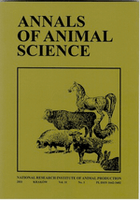
Annals of Animal Science
Advancing Knowledge in Animal ScienceAnnals of Animal Science is a prestigious academic journal, published by Walter de Gruyter GmbH in Germany, specializing in the multifaceted field of Animal Science. With an ISSN of 1642-3402 and an E-ISSN of 2300-8733, this journal is recognized for its high-impact contributions, holding a commendable impact factor that demonstrates its relevance in nurturing quality research. The journal has garnered Q2 rankings in 2023 across various categories including Animal Science and Zoology, Food Animals, and Small Animals. Notably, its Scopus Rankings indicate an elite standing, with the journal placing in the top 10% within its specific fields. Covering converged years from 2008 to 2024, the Annals of Animal Science serves as an essential platform for researchers, professionals, and students to disseminate knowledge and advance studies related to animal health, welfare, and production. The journal also emphasizes open access, promoting broader accessibility to foster collaboration and innovation in Animal Science globally. For those committed to advancing their understanding of veterinary and agricultural sciences, this journal is a vital resource.

International Aquatic Research
Navigating the currents of aquatic biology and ecology.International Aquatic Research, published by the Islamic Azad University, Tonekabon Branch, is a vital open-access journal dedicated to advancing the field of aquatic sciences since its inception in 2009. With an ISSN of 2008-4935 and an E-ISSN of 2008-6970, the journal plays a significant role in disseminating high-quality research findings from Iran and around the globe. It covers a broad range of topics in aquatic biology, fisheries science, and marine ecology, making it a valuable resource for researchers, professionals, and students alike. As of 2023, it ranks in the third quartile (Q3) of the aquatic science category with a Scopus rank of #138 out of 247 in Agricultural and Biological Sciences, reflecting its growing influence in the field. With a commitment to promoting scientific knowledge and fostering collaboration among aquatic research communities, International Aquatic Research is positioned as an essential platform for those dedicated to understanding and conserving marine and freshwater environments.

SPANISH JOURNAL OF AGRICULTURAL RESEARCH
Cultivating Knowledge for Sustainable AgricultureThe Spanish Journal of Agricultural Research (ISSN: 1695-971X, E-ISSN: 2171-9292), published by the prestigious Consejo Superior Investigaciones Cientificas (CSIC), serves as a vital resource for those engaged in the fields of agronomy and crop science. Established as an Open Access journal since 2003, it aims to foster the dissemination of innovative research and practical applications related to agricultural practices and sustainability. With its Q3 category in Agronomy and Crop Science and a Scopus ranking of #224 out of 406, the journal provides an accessible platform for scholars to share valuable findings that enhance agricultural productivity and environmental stewardship. Covering research from 2006 to 2024, this journal continues to be instrumental for researchers, professionals, and students eager to remain at the forefront of agricultural science advancements.

SU URUNLERI DERGISI
Connecting Researchers to Elevate Aquatic SciencesSU URUNLERI DERGISI, published by EGE UNIVERSITY, FACULTY OF FISHERIES, is a premier open-access journal dedicated to advancements in aquatic sciences and fisheries research. With the ISSN 1300-1590 and E-ISSN 2148-3140, this journal has been committed to disseminating high-quality research since 1984, offering valuable insights into the management and conservation of aquatic resources. Based in BORNOVA-IZMIR, Turkey, the journal serves as a crucial platform for researchers, professionals, and students who are actively engaged in the study of fishery practices, aquaculture, and related environmental challenges. As a resource for innovative and impactful studies, SU URUNLERI DERGISI encourages submissions that foster collaboration and advancement within the aquatic research community.

AQUACULTURE INTERNATIONAL
Unveiling the Science Behind Aquaculture AdvancementsAquaculture International is a premier peer-reviewed journal dedicated to advancing the field of aquaculture and aquatic sciences. Published by Springer in the Netherlands, this journal has established itself as a critical resource for researchers, professionals, and students seeking to explore the latest advancements and innovations in the aquaculture industry. With an impressive impact ranking—Q2 in both Agronomy and Crop Science, and Aquatic Science as of 2023—this journal ranks favorably within its categories, placing in the top percentiles of Scopus' metrics. Covering a diverse array of topics related to sustainable aquaculture practices, species cultivation, and environmental impacts, Aquaculture International aims to foster dialogue and collaboration among scholars and industry practitioners. As the field evolves, the journal remains committed to publishing high-quality research that informs policy and practice, enhancing the sustainability of aquatic resources from 1993 to 2024 and beyond.
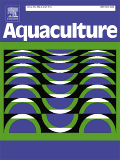
AQUACULTURE
Shaping the future of aquatic research and development.AQUACULTURE is a premier academic journal dedicated to the field of aquatic science, published by Elsevier. With a robust Impact Factor, the journal is renowned for its significant contributions to aquatic biology and the sustainable development of aquaculture practices. Since its inception in 1972, AQUACULTURE has established itself as an essential resource for researchers and professionals in the industry, regularly ranked in the Q1 category of aquatic science journals and positioned in the 14th percentile of its field according to Scopus rankings. Covering a wide array of topics including fish biology, aquaculture technology, sustainable practices, and environmental impacts, AQUACULTURE aims to disseminate innovative research findings that drive the industry forward. The journal, accessible to a global audience from its base in the Netherlands, continues to foster collaboration, discussion, and application of research to both academic and practical realms within aquaculture. Researchers and students alike will find valuable insights and current trends in this highly respected publication.

Turkish Journal of Fisheries and Aquatic Sciences
Pioneering insights for the preservation of aquatic resources.Turkish Journal of Fisheries and Aquatic Sciences, published by the CENTRAL FISHERIES RESEARCH INST, is a key resource in the fields of Fisheries and Aquatic Sciences, catering to a global community of researchers and professionals. With its ISSN 1303-2712 and E-ISSN 2149-181X, this journal offers an engaging platform for the dissemination of high-quality research from Turkey, covering critical topics within Animal Science and Aquatic Science. As a third quartile journal in both categories (Q3, 2023), it provides valuable insights, contributing to a growing body of literature that addresses aquatic ecosystems, fisheries management, and biodiversity conservation, thereby enhancing the sustainability of aquatic resources. The journal has shown considerable impact, ranking 144th in Animal Science & Zoology and 116th in Aquatic Science within Scopus, reflecting its relevance and credibility within the academic community. Operating from 2008 to 2024, it invites open access submissions to foster collaboration and knowledge sharing among scientists, students, and practitioners alike, reinforcing its dedication to advancing the science of aquatic ecosystems.